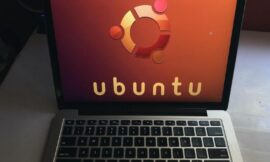
Prometheus and Zabbix are network service monitoring and alerting tools for devices and systems. These network monitoring solutions provide scalable, reliable monitoring services, but the products differ in technology, tools, integrations and ease of use.
What is Prometheus?
Prometheus is an open-source software platform for monitoring and alerting, focusing on time-series data. Prometheus leverages its technology to provide extremely fast reporting of time-series data sets. The network monitoring platform is best suited to cloud technologies, SaaS solutions and exceptionally large platforms.
What is Zabbix?
Zabbix is an enterprise-level open source monitoring solution that can monitor anything from small environments to large, distributed systems. Scalable and accessible, Zabbix can monitor millions of metrics with ease. Zabbix has been around longer than Prometheus and provides broader community documentation and support.
SEE: 40+ open source and Linux terms you need to know (TechRepublic Premium)
Prometheus vs. Zabbix: Feature comparison
| Features | Prometheus | Zabbix |
|---|---|---|
| Installation | Complex | Simple |
| Query language | PromQL | Item keys |
| Architecture | Automatic detection | Server/agent |
| Data storage | Internal database | External database |
| Data management | Time-series data | Time series, logs |
| Data visualization | Expression browser | Dashboard |
| System alerting | Alertmanager | Built-in |
| Scalability | Less than 10,000 nodes | Large |
| Environment | Service-based | Machine-based |
Installation and setup: Complexity and speed
Prometheus can be challenging to set up and configure. It does not come with features such as alerting or complex data visualization out of the box, so organizations must separately install and integrate these features and manually configure files.
Zabbix has more pre-installed features, making its installation and setup faster. However, Zabbix does not offer some of the deeper configuration options in Prometheus that make it so powerful.
Query language: PromQL vs. item keys
Prometheus uses the Prometheus Query Language, a proprietary language designed to assist in the querying of its time-series data. PromQL is flexible, easy to use and very similar to SQL, making it easy to learn for most developers. PromSQL offers advanced and granular control over Prometheus data.
Zabbix uses item keys to pull data; item keys are significantly more restrictive but easier to use than PromQL. Little development knowledge is needed to use Zabbix item keys, but some developers or analysts may experience difficulty if they cannot pull the metrics or data that they need.
Architecture: Metric collection
Prometheus offers automatic service detection and has a wide array of integrations. Many services already support Prometheus data collection processes or have libraries that can be added to do so. Prometheus will pull metrics periodically from the system; alternatively, metrics can be pushed directly to Prometheus.
Zabbix’s architecture is separated into servers and agents; the server collects data while the agents send the data. It’s also possible to install Zabbix without agents, in which case the server will pull data from the required services in an agentless installation.
Neither architecture is inherently better than the other, although some may consider Zabbix’s architecture older. Zabbix’s architecture lends itself better to hardware and device management; Prometheus is better for cloud services and SaaS.
Data storage: Internal vs. external
Prometheus uses an internal time-series database, providing lightning-fast connectivity to data. Unfortunately, this data is only logged for two weeks, after which an organization has to maintain its own remote data services.
Zabbix uses external, popular databases such as MySQL or PostgreSQL; an organization must build this database when installing Zabbix. Most developers can easily use MySQL, PostgreSQL and other SQL technologies, but this comes at a performance cost.
Data management: Time series vs. logs
Prometheus returns data extraordinarily quickly, but it is limited in its data storage. Prometheus only collects time-series data and only stores it in its rapid-access file system for 14 days.
Zabbix can store more complex volumes of data, such as system logs. Prometheus can be integrated into Grafana or other software packages to mimic this functionality, but Zabbix has native support.
Data visualization: Options for customization
Both Prometheus and Zabbix provide multiple data visualization methods and dashboard creation.
In Prometheus, users launch the expression browser. The expression browser isn’t a dashboard, but instead lets users query the Prometheus data sets. For those who want a complete dashboard system, Grafana can be integrated to provide more in-depth insights.
Zabbix has a native dashboard system that can be customized with themes. Users can customize their dashboard with widgets as well as view network maps, graphs and drill-down reports.
System alerting: External or built-in
Prometheus does not have built-in alerting functionality. First, Prometheus needs to be configured to send alerts based on alerting rules. Then, Alertmanager must be installed to send the alerts. Once this system is configured properly, it’s robust.
Zabbix has pre-built alerting functionality. Alerting rules can be designed to alert specific personnel during a given event. Events can then be managed through remote commands, messages and other user-defined response triggers. Zabbix has in-depth reporting functionality.
Scalability: Performance at scale
Prometheus tends to perform very well, even on exceptionally large networks. This is due to its native time-series database, cluster management and overall simplicity of its architecture.
Zabbix performs very well up to around 10,000 nodes. After 10,000 nodes, Zabbix starts to suffer under the weight of its external relational database and its lack of reliable management for larger clusters.
Environment: Service-based or machine-based
While Prometheus and Zabbix can deploy to a wide variety of environments, Prometheus is generally considered a cloud and SaaS solution, whereas Zabbix is a more traditional machine monitoring service.
Prometheus provides alerts for services, systems and data centers. Alerts can be triggered on the basis of any time-series data. Zabbix provides alerts more conventionally in terms of machines and devices. For some applications, Zabbix alerting may not be robust enough; for other applications, Prometheus may be too complex.
Choosing Prometheus vs. Zabbix
Prometheus and Zabbix provide different levels of functionality depending on your organization’s monitoring needs. Prometheus provides a lightning-fast, internal time-series database solution; Zabbix provides easy-to-use, out-of-the-box metrics monitoring.
If you need a time-series database solution that’s fast and easy to query, choose Prometheus. Note that you will need additional integrations for alerting functionality and for storage past 14 days. If you need monitoring for a small or midsize number of devices with easy-to-use, limited querying and an all-in-one system setup, use Zabbix.
While there are hosted solutions for both platforms, Prometheus and Zabbix are open source and free. Organizations can test both network monitoring tools on their systems to determine which solution is the best for them.
Source of Article



